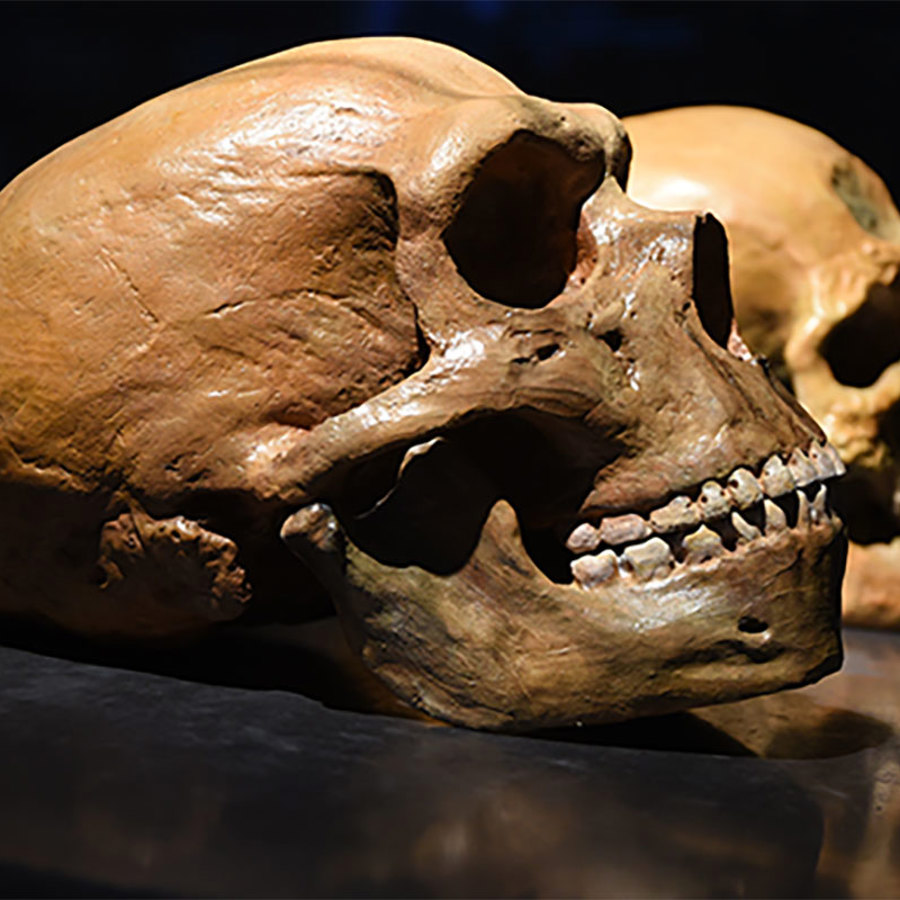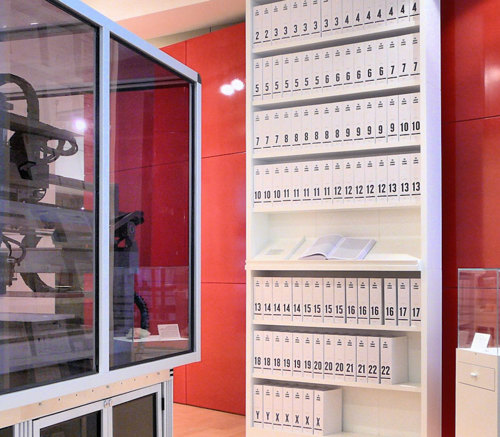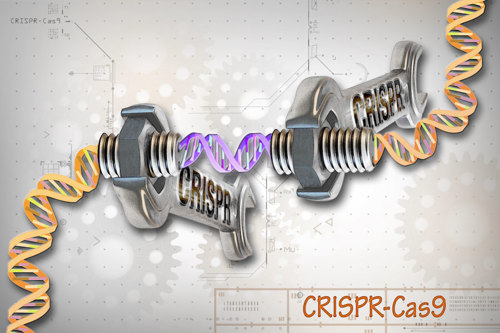
Would it be possible to recreate some Neanderthals?
July 7, 2017

- Related Topics:
- Bioethics,
- Ancient DNA,
- Neanderthals,
- Genetic engineering,
- Futuristic science
A curious adult from Texas asks:
Just barely. It would take a lot of work and take a long time but if we wanted to, we could just about recreate a Neanderthal.
Since we know what Neanderthal DNA looked like, you might think it shouldn’t be too hard to resurrect one. After all, knowing Neanderthal DNA means we have all the instructions for making a Neanderthal.
Unfortunately what we don’t have is the actual DNA inside of an actual cell. And that is what we need if we are going to have Neanderthals on Earth yet again.
Having a Neanderthal’s DNA readout is like having hundreds of millions of lines of computer code on millions of sheets of paper. It is not very useful that way. The code needs to be put on a computer in order to run.
The same is true for Neanderthal DNA. But instead of a computer, the instructions found in the Neanderthal DNA need to be put into a cell.
Unfortunately, we can’t just “type” the DNA code into a cell. It is much harder than that.
There are a couple of ways we could get the DNA into a cell.

Changing Human DNA to Neanderthal DNA
The most likely way to bring back a Neanderthal with today’s technology is to start out with a human cell and slowly, bit by bit, change it into a Neanderthal one. Most likely we would do this with something called CRISPR/Cas9. This technology makes it relatively easy to change DNA.
Since there are millions of DNA differences between a human and a Neanderthal, CRISPR/Cas9 would probably have to be done millions of times. Not once per change as CRISPR/Cas9 is versatile enough to do many changes at once but at the very least you’d need hundreds of thousands of changes. (The record for number of changes in a mammalian cell as of 2015 was 60 or so in pigs.)
Making so many changes like this would be like starting with a computer program and only making a few changes at a time. Except that after you make a change, you have to build a new hard drive to make the next set of changes. Hundreds of thousands or millions of times.
In the case of making a Neanderthal cell out of a human one, scientists would need to grow up the changed cells and check that the changes are there. And that there aren’t any other changes. And again, this would be done hundreds of thousands of times.
This is doable but is obviously a lot of work!
Inserting Lab-Made DNA into a Cell
Another way to get Neanderthal DNA into a cell that might be possible in the near future is to make the DNA in a lab and get a cell to take it up. Scientists have been able to do this with very simple beasts like bacteria but anything much more complicated is much trickier.
A group of scientists is in the process of doing something similar with baker’s yeast. It is more complicated than a bacteria but still much simpler than you, me, or a Neanderthal.
Instead of 3 billion letters of code, this yeast has 12 million or so. And scientists have been trying to make a synthetic yeast for years and years.
What they do is make a chunk of the yeast’s DNA with the changes they want to include and put it into the yeast cell. The yeast then swaps out its DNA for this newly made DNA. This works really well in yeast because yeast is a champion when it comes to swapping out its DNA. It is a recombination god.
These scientists came up with a scheme that let them replace 2000-4000 DNA letters of yeast DNA at a time. A similar approach in people would require 1.5 million swaps. And because human cells are not recombination champions, each swap would need a lot of testing beforehand to make sure it all went OK.
As you can probably guess, right now we couldn’t really use this approach to completely replace human DNA with Neanderthal DNA. This technology simply isn’t yet ready for prime time.
But with a couple of technological improvements, swapping out human DNA for Neanderthal DNA one chunk at a time might be possible. Just not yet.

Growing a Neanderthal from a Cell
In either approach, the next step after getting Neanderthal DNA into a cell would be to get the cell to grow into a Neanderthal. For that to happen, scientists would need to turn the cell into something equivalent to an embryonic stem cell — an induced pluripotent stem (iPS) cell.
These iPS cells can turn into any other kind of cell which means we could coax it into growing into a Neanderthal baby.
Getting a Neanderthal iPS cell wouldn’t be as hard as getting Neanderthal DNA into cells. Scientists have gotten very good at turning a wide variety of cells into iPS cells.
Here the tricky part would be growing one of these iPS cells all the way to a baby Neanderthal. No one has yet done this with people but it should be possible. Scientists have been able to do something similar with mice for years.
Scientists coax the mouse iPS cell into an embryo and then put that embryo into a surrogate mouse. The embryo grows and develops in the womb and in the end you have a mouse pup.
The same strategy should, in theory, work for human cells too.

Even if We Can, Should We?
We will soon have the technology to bring back Neanderthals. So the next question is whether or not we should.
A few things to think about:
- Why are we doing this? Just because we can?
- Going from an iPS cell to a baby will be a steep learning curve (people are not mice). This means lots of failed attempts which means lots of miscarriages, stillbirths, birth defects and so on.
- The Neanderthal will have to be carried by a surrogate woman. What does this mean to her?
- What about the Neanderthal? Does he get to live in our world? Is he forced to live in a lab? Does he get a job? (If so, would he be limited to being a spokesperson for GEICO)?
Those are just the ones off the top of my head. There are certainly many more ethical problems with bringing Neanderthals back.

Author: Dr. D. Barry Starr
Barry served as The Tech Geneticist from 2002-2018. He founded Ask-a-Geneticist, answered thousands of questions submitted by people from all around the world, and oversaw and edited all articles published during his tenure. AAG is part of the Stanford at The Tech program, which brings Stanford scientists to The Tech to answer questions for this site, as well as to run science activities with visitors at The Tech Interactive in downtown San Jose.
 Skip Navigation
Skip Navigation
